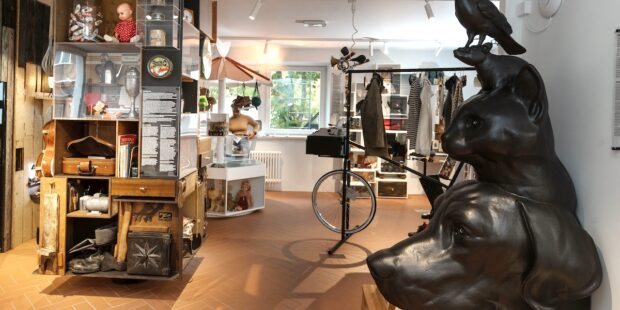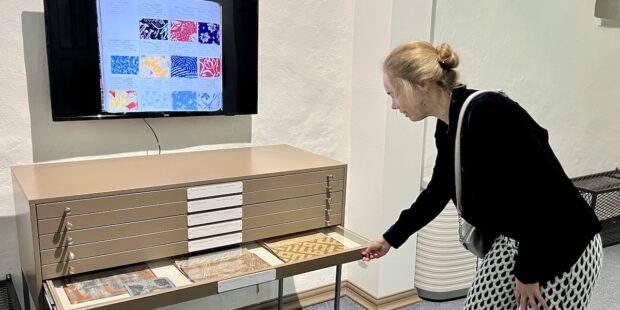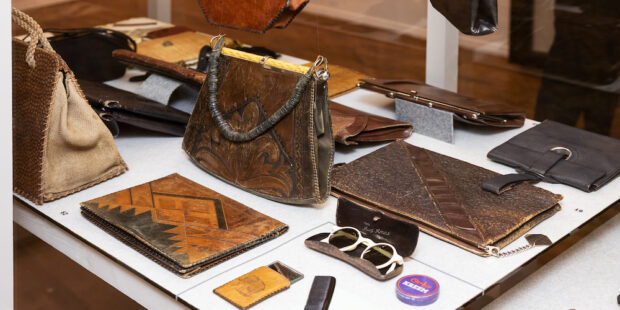A revolution has been sung, danced and made on the stage of the Song Festival Grounds
Text Susanna Poikela Photos Raul Mee and Gunnar Laak
 The song festival tradition has continued from one generation to the next for more than 150 years and was a significant factor in Estonia's re-independence.
The song festival tradition has continued from one generation to the next for more than 150 years and was a significant factor in Estonia's re-independence.
The exhibition at the Tallinn Song Festival Grounds Visitor Center shares the history of the Tallinn Song Festival Grounds and the more than 150-year-old song festival tradition.
“Our exhibition consists of three parts: The first part describes the song festival culture, the second describes the time of the singing revolution and the third describes the construction stages of Tallinn’s Song Festival Grounds. In the exhibition, we have ended up emphasizing the singing revolution, because it is such a significant period for Estonia and Estonians”, says Urmo Saareoja, director of Tallinn’s Song Festival Grounds visitor centre.
The Singing Revolution began in the mid-1980s and continued until August 20, 1991, when Estonia regained its independence after 50 years of occupation.
In the lobby of the visitor centre, you can watch a video compilation about the Singing Revolution before entering the actual exhibition space.
Two dolls sit side by side at the door of the exhibition space, one of which depicts a singer of the first song festival from 1869 and the other a man in jeans from the 1980s who has participated in the singing revolution. Obviously, these two figures are connected by a centuries-old singing tradition, which proved to be a culturally preserving, unifying and ultimately liberating force for Estonia.
The exhibition nicely describes how the symbols of the Soviet Union began to change to blue and black and white over the decades and how, for example, people dared to show the Estonian flag again at gatherings and demonstrations.
In addition, the exhibition presents many Estonian singers, cultural influencers and politicians, all of whom fought together for a free Estonia before re-independence. “Üks kord me võidame niikuinii” (English for “once we win”), Heinz Valki’s words echoed on the festival stage in 1988 and they have remained in the heart of every Estonian since.

The Song Festival is growing in popularity in Estonia
In the last room, a miniature model of Tallinn’s Song Festival Grounds is displayed, around which a description of the construction stages of the Song Festival Grounds is provided.
“During the renovation of the Song Festival stage in 2018, it was revealed that three layers of wood had not been used for the handsome arched ceiling, according to the drawings, but only two. The third one had disappeared like ashes in the wind at the construction site. No one knows where the material ended up, but we can only guess that it found another use”, laughs Urmo Saareoja.
“Now the roof of the renovated Song Festival stage has all three layers of wood in accordance with the original drawings. The singers are of the opinion that the acoustics have clearly improved.”
The stage can hold up to 33,000 singers at once.
“During the past decades, the song festival culture has grown in popularity. The Song Festival Grounds are always full of people,” says Urmo Saareoja. The youth song and dance party will be organised between June and July of this year, and the main song festival in 2025.
The Song Festival Grounds visitor centre is open from Monday to Friday between 11 am. and 4 pm. The entrance ticket to the exhibition costs 8 euros. The price of a family ticket is 18 euros.
Tallinn Song Festival Grounds, Narva mnt. 95, Tallinn.
To learn more about this and similar topicsEstonian Flag Estonian Independence Exhibition Kadriorg Song Festival Song Festival Stage Tallinn Song Festival Grounds Tallinn Song Festival Visitor Centre









